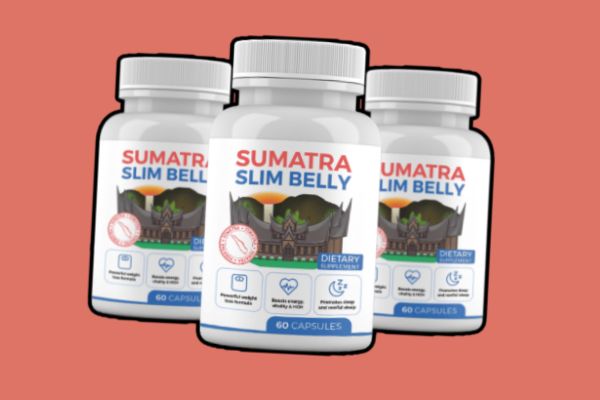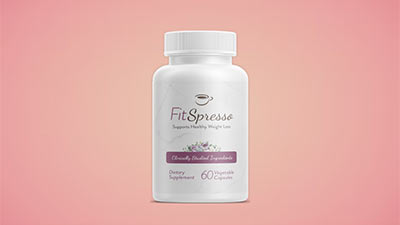Unlocking 50+ Secrets to Accelerated Weight Loss

Whether you're aiming to enhance your overall well-being, increase energy levels, or prepare for a specific event, the journey to shed excess weight is a common one. Recognizing the universal challenge of maintaining weight loss, it's crucial to embark on this journey with care, ensuring it aligns with your current body mass index (BMI).
Assuming you're within a healthy weight range (utilize a BMR calculator for confirmation), pursuing weight loss through sensible means is always advantageous. No matter the season or circumstance, prioritizing fitness and striving for a healthier weight is commendable.
Yet, the reality is that altering dietary habits and incorporating more physical activity isn't always straightforward. Hence, we've compiled an array of approaches to facilitate rapid weight loss.
Whether you're diversifying your meal plans, experimenting with different workout routines, or occasionally indulging in a treat, the following advice encompasses dietary and lifestyle adjustments to help attain your wellness objectives. Remember, the ultimate aim isn't solely shedding pounds but embracing a holistic approach to living, fostering improved health and contentment.
Increase Your Intake of These Foods
Incorporate Fat-Burning Foods, Including Protein
Including fat-burning foods in your diet can reignite your metabolism. Starting with quality high-protein foods lays the foundation for transforming your body into a fat-burning powerhouse. Opt for grass-fed beef, organic chicken, free-range eggs, wild-caught fish like salmon, lamb, venison, and bone broth as excellent sources of protein.
Protein-rich foods serve as the fundamental building blocks for muscles, crucial for supporting a robust metabolism. Additionally, protein is the macronutrient least likely to be stored as fat.
Wondering about the optimal daily protein intake? For those aiming to torch fat and enhance muscle growth, aim for consuming 0.7 to 1 gram per pound of body weight. For instance, if you weigh 150 pounds, your daily protein intake should range from 75 to 150 grams, depending on your specific goals.
Opt for Nutritious Fats
Coconuts are rich in MCFAs (medium-chain fatty acids), a beneficial type of healthy fat readily converted into energy by your body. To enhance your diet, consider swapping out canola oil and other processed fats for superior alternatives like coconut oil and olive oil.
For cooking purposes, utilize coconut oil and ghee, while reserving olive oil for salad dressings. Avocado oil presents a versatile option suitable for both cooking and dressing salads.
Embrace Fiber-Rich Foods
Incorporating fiber-rich foods into your meals can promote prolonged satiety and aid in curbing sugar cravings. Moreover, fiber has been scientifically shown to stabilize blood sugar levels, lower cholesterol, and offer additional health benefits. Despite this, the average individual typically consumes only 15–20 grams of fiber per day, falling short of the recommended daily intake of 30–40 grams sourced from various high-fiber foods.
Sprouted seeds such as flaxseeds, chia seeds, and hemp seeds stand out as excellent sources of healthy fiber, supporting your weight loss endeavors. Notably, they boast high protein content and are rich in omega-3 fatty acids, further bolstering metabolic function.
Packed with Essential Nutrients
To shed unwanted weight effectively, it's essential not only to monitor calorie intake but also to prioritize nutrient-rich foods. Vegetables stand out as the prime source of vital vitamins and minerals crucial for regulating metabolic processes and supporting organ function, including the thyroid.
Among the most nutrient-dense options are green leafy vegetables and cruciferous vegetables. Favorites include kale, spinach, broccoli, cabbage, cauliflower, asparagus, and carrots. These vegetables can be enjoyed steamed, sautéed, or cooked in coconut oil for added flavor and health benefits.
Harness the Power of Grapefruit
Research suggests that incorporating grapefruit into your diet may yield benefits, attributed in part to an enzyme called AMP-activated protein kinase (AMPK) that aids in sugar utilization. Additionally, nootkatone, a compound found in grapefruit, has demonstrated a significant increase in fat-burning activity (AMPK).
Utilize Select Herbs and Spices
While often overlooked in many dietary plans, integrating fat-burning herbs and spices could be the key to achieving rapid weight loss. Scientific studies have highlighted the efficacy of herbs like cayenne pepper, turmeric, cinnamon, and dandelion in enhancing the flavor of meals while potentially promoting weight loss.
For instance, cayenne pepper acts as a metabolic enhancer and anti-inflammatory agent. Research indicates that consuming cayenne pepper at breakfast may reduce appetite, resulting in lower calorie consumption throughout the day. This is why cayenne is a common inclusion in numerous thermogenic weight loss supplements.
Incorporate These Beverages
Hydration with Water
Instead of fretting over stomach bloating and water retention, recognize that water consumption can actually alleviate bloating and contribute to overall weight management. Water not only aids in flushing out fat toxins from the body but also sustains optimal metabolic function.
Remarkably, a 2013 study demonstrated that the metabolic rate of 14 healthy individuals increased by 30 percent after consuming approximately 16 ounces of water.
Enjoy Herbal Infusions
Sipping on 1–3 cups of herbal teas such as green tea, white tea, black tea, and rooibos tea daily might elevate your metabolism. According to research published in the American Journal of Clinical Nutrition, green tea surpasses other varieties like oolong in promoting weight loss due to its rich catechin content.
Furthermore, drinking yerba mate tea has been linked to enhanced fat oxidation and increased energy expenditure during physical activity. A study featured in Nutrition & Metabolism investigated the effects of yerba mate consumption on both male and female subjects, concluding that it can heighten exercise efficiency for weight loss and sports performance.
Cleansing Beverages
Whether for a short period or an extended duration, initiating a body detox can serve as a beneficial step to initiate weight loss and eliminate accumulated toxins from the body. An uncomplicated method to kickstart this process is by incorporating the Secret Detox Drink into your routine.
Integrate Apple Cider Vinegar
In the realm of detoxification, incorporating fermented, unfiltered apple cider vinegar into your water intake could potentially alleviate gastrointestinal issues such as constipation, diarrhea, and acid reflux, while also aiding in appetite control and potentially mitigating weight gain and elevated cholesterol levels.
These benefits stem from the active ingredient in apple cider vinegar known as acetic acid, along with the enzymes and probiotic bacteria that develop during the fermentation phase.
Gradually introduce one to two tablespoons of apple cider vinegar diluted in water before your main meals. To enhance flavor and nutritional value, consider blending it with a touch of raw honey and freshly squeezed lemon juice.
Eliminate These Items from Your Eating Habits
Highly Processed Foods
Consider steering clear of specific food items that tend to promote overconsumption and trigger inflammation, particularly ultra-processed foods, which constitute more than 60 percent of the typical American diet. It's advisable to replace these items with healthier alternatives.
Regrettably, the most affordable and readily available foods are often those that hold a strong biological appeal (being rich in sugar and calories) and contribute to overeating. It requires diligence, but it's crucial to cut out fast food, which relies on additives and excessive sodium for flavor, as well as foods containing lengthy, difficult-to-pronounce ingredient lists.
In essence, the approach is relatively straightforward: Increasing the intake of fruits and vegetables while reducing consumption of fats/oils and sugary snacks/beverages has been shown to aid in obesity prevention. Opt for minimally processed, whole foods whenever possible, ideally prepared from scratch.
Concealed Sugars
Contrary to popular belief, excessive sugar intake, rather than fat consumption, is primarily responsible for weight gain. Sugar may be concealed under various names such as corn syrup, dextrose, fructose, juice concentrate, maltodextrin, raw sugar, and brown sugar. These sugars are often found in seemingly healthful products like fruit juice, granola bars, dressings, and protein bars.
Replace and avoid all forms of hidden sugars with natural substitutes such as green stevia and raw honey, although it's advisable to consume these alternatives in moderation.
Processed Grains
Grains contain several compounds such as gluten, starch, and phytic acid, all of which can lead to various health concerns. Gluten is known to cause inflammation, starch converts rapidly into sugar, and phytic acid inhibits mineral absorption.
Swap out your regular grain consumption with fruits and vegetables, or limit yourself to one serving per day of sprouted grain bread (such as Ezekiel bread) or sourdough. Alternatively, opt for sprouted and fermented grains if you're reluctant to eliminate grains entirely, as they contain fewer antinutrients and offer greater satiety.
For baking purposes, consider switching to Paleo-friendly flour options like almond or coconut flour, which are conducive to weight loss.
Processed Oils
Common vegetable oils like canola oil found in many processed foods can hinder your weight loss efforts and promote inflammation. Replace all vegetable oils in your diet with healthier alternatives such as coconut oil, avocado oil, and grass-fed butter.
Revise Your Eating Habits
Monitor Your Caloric Intake and Macros
Research suggests that reducing calories — and selecting the appropriate types of calories — could aid in weight loss and potentially extend lifespan. A 2023 study even proposed that reducing calorie consumption by 25 percent could slow down the aging process by 2 to 3 percent.
The Harris-Benedict equation is a widely used tool employed by nutritionists and healthcare professionals to estimate an individual's calorie needs based on factors such as gender, age, height, weight, and activity level. Below are the equations for both genders:
For Males: 66 + (6.2 × weight in pounds) + (12.7 × height in inches) – (6.76 × age in years)
For Females: 655.1 + (4.35 × weight in pounds ) + (4.7 × height in inches) – (4.7 × age in years)
Additionally, multiply the result by 1.2 for sedentary individuals, 1.3 for moderately active individuals, and 1.4 for active individuals.
Utilize an online calorie calculator to ascertain your daily caloric requirements.
Simultaneously, keep track of your macronutrient intake. Carbohydrates, fats, and proteins constitute the three primary macronutrients. It's generally advised to aim for approximately 45 percent to 65 percent of total daily calories from carbohydrates, 20 percent to 35 percent from fat, and 10 percent to 35 percent from protein.
Monitor Your Dietary Intake
Research indicates that monitoring your food intake, whether through a calorie-tracking application or other means, can serve as a valuable tool in achieving your health objectives. This practice fosters mindfulness regarding your eating habits, allowing you to gradually develop a deeper understanding of your dietary patterns to the extent that journaling may become unnecessary.
A study revealed that postmenopausal women who tracked their food intake, engaged in self-monitoring, prepared meals at home, and adhered to regular meal schedules exhibited enhanced weight loss outcomes over a 12-month period.
Embrace Intermittent Fasting
Intermittent fasting, also referred to as cyclic fasting, offers numerous benefits such as curbing mindless eating, boosting metabolism, and supporting hormone regulation and digestion. Scientific evidence suggests that fasting can help stabilize blood sugar levels, alleviate inflammation, and promote cardiovascular health.
Consider experimenting with fasting methods like “Time-Restricted Feeding,” wherein you fast for 16 hours each day and confine your eating window to eight hours (often involving abstaining from food after dinner and skipping breakfast the following morning). Alternatively, “Alternate Day Fasting” involves consuming no food or only a minimal amount on fasting days and resuming normal eating on non-fasting days.
Optimize Your Morning Meal
On the flip side, some individuals thrive on a traditional three-meals-a-day routine. Kickstart your day with a nourishing breakfast that encompasses a balanced mix of all three macronutrients, rather than one predominantly loaded with carbohydrates. This approach not only fuels your body with energy during the initial hours of wakefulness but also allows ample time throughout the day to expend those calories.
Be Mindful of Liquid Calories
Indulgent, frothy beverages may offer sensory pleasure, yet they often pack enough calories to substitute for an entire meal — not to mention the added sugar and preservatives they contain. Consider crafting your own healthier renditions instead. Whether it's a pumpkin spice latte or a wholesome hot chocolate, there's usually a nutritious alternative for most calorie-dense drinks.
Snack Wisely
Ditch the temptation of vending machine snacks and pre-packaged convenience foods by preparing your own nutritious snacks to take with you to work or when you're on the move. Whether it's apple chips or a portable healthy smoothie, packing your own snacks not only facilitates rapid weight loss but also ensures you're receiving essential nutrients without the undesirable additives found in costly processed snacks.
Furthermore, maintain a stock of fresh, wholesome snacks in your pantry and refrigerator, positioning them prominently to encourage healthier choices. Consider washing and storing fresh fruits and vegetables in glass containers or attractive bowls on your countertop or refrigerator shelves where they're easily visible and accessible.
Prioritize Home-Cooked Meals
Here's a little-known strategy for achieving rapid weight loss without relying on exercise: Prepare the majority of your meals and snacks using whole foods in the comfort of your own kitchen. Begin by committing to cooking at least one meal per day at home. As you gain confidence in your culinary skills, gradually increase the frequency of home-cooked meals.
Optimize your budget by selecting recipes that feature seasonal produce and take advantage of discounts advertised in your local grocery store's sales flyer. Additionally, don't underestimate the value of leftovers. Repurpose them into new dishes (such as creating a stir-fry with leftover cooked meats and vegetables) or designate a weekly “leftover night” where family members can enjoy their favorite dishes again.
Implement Healthier Food Choices
Adopting a clean eating lifestyle doesn't necessitate sacrificing your favorite foods. Instead, explore ways to “healthify” them yourself, allowing you to savor delicious and nutritious meals that also satisfy your cravings.
Consider bringing your own nutritious dishes to social gatherings. Whether it's a wholesome appetizer, a flavorful side dish, or a clean-eating dessert, you'll have the assurance of at least one healthy option to enjoy while minimizing consumption of less nutritious offerings.
Practice Mindful Eating
Eating hastily often leads to overindulgence. Remember, it takes approximately 20 minutes for your stomach to signal fullness to your brain. Embrace mindful eating by chewing slowly and relishing the flavors of your food. This mindful approach not only helps in reducing calorie intake but also aids digestion and allows your brain to synchronize with your body's satiety cues.
Monitor Your Portions and Opt for Smaller Plates
Consider using smaller plates, as the same serving of food appears diminished on larger plates, tricking your brain into perceiving less food.
At social gatherings featuring hors d’oeuvres and appetizers, exercise restraint by committing to consuming only one type of bite-sized food and declining the rest. Similarly, when faced with a tempting pizza party at the office, opt for the slice adorned with vegetables, relish it, and then resist further temptation.
Additionally, ensure that each meal comprises a balance of protein, fiber, and healthy fats. Inadequate protein intake, for instance, can impede feelings of fullness.
Allow for Occasional Indulgences
If the satisfaction of making healthier choices alone isn't sufficient (and that's perfectly fine!), reward yourself — but remember, rewards don't have to be tied to food. For example, if you've consistently exercised five days a week throughout the month, treat yourself to that new tennis racquet you've been eyeing or indulge in a manicure or pedicure.
However, incorporating a cheat meal — not a cheat day! — into your routine may also be necessary occasionally, particularly as you adjust to a healthier lifestyle. Allowing yourself a small indulgence can deflate cravings and help you stay on track. Begin by incorporating one cheat meal per week and gradually reduce the frequency.
Assess Your Hunger Levels Before Overindulging
A 2015 study published in the journal Frontiers in Psychology revealed that boredom can lead to increased snacking and unhealthy eating habits. Before reaching for a snack, hydrate yourself with water and assess whether you're genuinely hungry. Take a brief walk outdoors or around the office, or simply wait for approximately 20 minutes before deciding to eat.
Engage in These Workouts
Embrace High-Intensity Interval Training (HIIT)
To overcome a weight-loss plateau, revitalize your metabolism, and efficiently target belly fat, there's no exercise regimen more effective than high-intensity interval training (HIIT), such as Tabata training. Research indicates that HIIT induces an afterburn effect in the body, leading to continued fat burning for several hours post-workout.
Incorporate interval training sessions into your routine three to four times per week, lasting between 20 and 40 minutes each session. Consider a 4-minute Tabata workout comprising 40 seconds of high-intensity exercise followed by 20 seconds of rest. Repeat this sequence 2 to 3 times for a comprehensive workout:
Sprint on a spin bike // Rest
Rapid push-ups // Rest
Pulsing squats with shoulder press // Rest
Sprint on a spin bike // Rest
Squat thrusts // Rest
Plank walk (spider walk) // Rest
Sprint on a spin bike // Rest
Lunges with shoulder press // Rest
If you're unsure where to begin with your fitness routine, have a preexisting injury or health concerns, or simply seek guidance on optimizing your gym sessions, consider enlisting the services of a personal trainer. A certified personal trainer can tailor a fitness program to align with your objectives while accommodating any unique circumstances. Investing in a personal trainer can serve as an effective catalyst for embarking on a healthy lifestyle or overcoming a weight-loss plateau.
Engage in Extended Cardiovascular Workouts
Although 20-minute workouts offer various health benefits, such as promoting heart and brain health, enhancing mood, and improving flexibility, they may not tap into your fat reserves during that brief duration.
Initially, during exercise, your body utilizes stored glycogen in the muscles for energy. It's only after approximately 20 or 30 minutes that your body transitions into fat-burning mode. To achieve significant fat loss during a workout, aim for 30 to 60 minutes of lower- to moderate-intensity exercise.
Integrate Resistance Training
Could resistance training truly expedite weight loss? Astute fitness enthusiasts understand that optimal workouts encompass not only cardiovascular activities but also incorporate strength training.
Building muscle contributes to overall inch loss, sustains metabolic activity post-workout, and enhances physical appearance. Researchers have even found that weightlifting might be more effective in reducing abdominal fat than aerobic exercise alone.
Green Superfood Blend
High-quality greens powders feature potent fat-burning components such as green tea, green coffee, and rhodiola, which can elevate energy levels. Additionally, they incorporate green foods like chlorella, wheatgrass juice, and kale, known for their potential to enhance digestion and alleviate bloating. Consider consuming one scoop of this blend mixed with water either before or after your workout routine.
Fish Oil Enriched with Vitamin D
Fish oil serves as a valuable source of omega-3 fatty acids, particularly EPA and DHA, renowned for their anti-inflammatory properties. These beneficial fats have been linked to improved body composition and counteracting metabolic changes associated with obesity. Vitamin D, functioning as both a vitamin and pro-hormone, plays a pivotal role in hormone regulation, thereby facilitating fat loss. Aim to supplement your diet with 1,000 milligrams of fish oil daily along with 2,000 I.U. of vitamin D3.
Probiotic Formulation
Probiotics play a crucial role in maintaining energy balance, regulating appetite, and modulating the storage of lipids. Incorporating a probiotic supplement into your daily routine can bolster digestive health and potentially aid in blood sugar management, particularly when coupled with prebiotics and a diet rich in fiber.
Yohimbine Extract
Yohimbe, alternatively known as yohimbine, is a herbal supplement commonly available in capsule or tablet form under various brand names. Some evidence suggests that yohimbine may possess fat-burning properties, particularly when utilized during periods of fasting.
While not all research studies support the notion of yohimbe inducing weight loss, certain studies have reported positive outcomes. For instance, one study observed a significant increase in average weight loss among overweight female participants adhering to a low-calorie diet supplemented with yohimbine.
Taurine Compound
Taurine, classified as an amino acid, is naturally present in tissues throughout the body and can also be synthesized in limited quantities.
L-taurine is frequently included in energy drinks, aimed at harnessing its potential benefits. It is believed to offer various health advantages, including enhanced fat oxidation during physical activity and improved cardiovascular function.
Consider These Diets
Ketogenic Diet
Interested in shedding pounds rapidly? Consider trying out the ketogenic diet. This approach involves significantly reducing or eliminating your intake of carbohydrates, forcing your body to rely on stored fat for fuel instead of glucose.
As your body transitions into a state of nutritional ketosis, it starts utilizing fat stores for energy production. Numerous studies indicate that individuals typically experience weight loss, particularly during the initial weeks and months of following a ketogenic regimen. Ordinarily, when we consume foods rich in sugar and carbohydrates, our bodies release insulin, a hormone responsible for storing fat. By minimizing carb intake, insulin levels decrease, leading to the utilization of glycogen as energy and subsequent fat breakdown.
Many individuals achieve favorable outcomes with a modified ketogenic diet that incorporates slightly higher carb intake or through practices like keto-cycling or carb-cycling, which involve periodic increases in carb consumption.
Low-Carb Diets
If you're seeking rapid weight loss without committing to a full ketogenic approach, a low-carb diet might suit your needs. This dietary strategy involves restricting carbohydrate-rich foods such as sugary items, grains, starchy vegetables, and fruits, while emphasizing protein and fat sources.
Various iterations of low-carb diets exist, including high-protein regimens such as the Atkins and South Beach diets. These diets typically comprise approximately 30 to 35 percent of calories from protein, 20 percent or less from carbohydrates, and roughly 45 to 50 percent from fat. Meals on a high-protein diet typically include portions of protein-rich foods like fish or meat.
Low-carb diets promote satiety due to their high protein and fat content, leading to reduced hunger and cravings. Carb cycling, another dieting method, involves alternating between high and low-carb days to facilitate weight loss more easily.
Vegan Eating Plan
While there exist various interpretations of vegetarian and vegan diets, most vegetarians abstain from consuming meats, including seafood and poultry. Vegans, on the other hand, take it a step further by avoiding all animal-derived products, including dairy and eggs.
For those inclined towards a predominantly plant-based lifestyle but hesitant to eliminate all animal products entirely, there's a middle ground. By substituting meat, fish, and other animal products with clean protein sources like legumes, lentils, and quinoa several times per week or more, one can achieve a balanced diet conducive to fat loss. Additionally, minimizing processed foods is crucial for optimal results.
Plenty of protein alternatives exist for those seeking to reduce their reliance on animal-derived foods, such as nuts, seeds, beans, ancient grains, or plant-based protein powders. A plant-based diet naturally boasts low fat content and high fiber content.
Mediterranean Cuisine
Individuals adhering to a traditional Mediterranean diet embrace a holistic approach to weight management without resorting to extreme measures. Inspired by the dietary habits of those residing in the picturesque Mediterranean region, this diet emphasizes the consumption of fresh fruits and vegetables, healthy fats like olive oil, and high-quality poultry and seafood, preferably in unprocessed forms.
With an emphasis on whole, minimally processed foods, the Mediterranean diet minimizes the intake of sugary and processed foods while promoting the consumption of nutrient-dense options like nuts. This dietary approach fosters sustainability over the long term, permitting occasional indulgences such as a glass of red wine or a savory steak.
Paleolithic Lifestyle
The Paleo diet remains a viable option for those seeking a healthful eating regimen. Modeled after the dietary patterns of our ancient Paleolithic ancestors, this approach prioritizes the consumption of foods available during prehistoric times.
Eliminating grains from the diet can yield significant benefits, as it eliminates nutritionally deficient, high-calorie starches that contribute to insulin spikes, typically replacing them with a greater variety of vegetables. Additionally, the diet prohibits sugar, a potent inflammatory agent and contributor to various diseases, while advocating for the consumption of anti-inflammatory foods like wild-caught salmon, blueberries, leafy greens, and nuts.
Implement These Lifestyle Strategies
Establish and Pursue Objectives
Setting a fitness goal provides a clear direction for your workouts and a sense of achievement upon completion. Whether it’s aiming to conquer your first 10K run, mastering a yoga headstand, or achieving 20 consecutive push-ups, a challenge can break you out of a fitness slump.
Additionally, share your intentions with loved ones. Not only does it garner emotional support, but it also prevents misunderstandings. For example, declining dinner invitations might be misinterpreted as disinterest in spending time together. By explaining your commitment to a healthy lifestyle, you can suggest alternative activities, like going to a movie or meeting for coffee.
Leverage Social Networks and Technology for Accountability
Announce your workout plans and invite others to join you. Share post-workout photos or engage with online communities that offer encouragement. Utilize fitness trackers or apps to monitor your dietary intake, exercise routines, and progress.
Monitor Your Advancement
Keep track of your journey to measure your accomplishments. Whether it’s monitoring inches lost, maintaining a food diary, or journaling about healthy changes, seeing your progress can be motivating. Recording your exercise and dietary habits can help identify weaknesses, overcome plateaus, and recognize triggers that affect your eating or exercise patterns.
Schedule Exercise Sessions
Incorporate workouts into your daily schedule as you would social engagements or professional commitments. Consider kick-starting your day with a workout to ensure it doesn’t get sidelined by unforeseen events. Morning exercise offers sustained energy, minimizes disruptions, and encourages healthier decision-making.
If finding a continuous block of exercise time is challenging, opt for shorter bouts throughout the day. Scientific evidence suggests that accumulating shorter bouts of exercise yields similar benefits to longer sessions. Incorporate quick cardio circuits, brisk walks during breaks, and strength training after dinner to stay active.
Maintain Your Healthy Lifestyle While Traveling
Just because you're away from your usual routine doesn't mean your healthy habits have to suffer. Take advantage of the hotel gym by jogging on the treadmill, explore local fitness options like barre studios or walking tours, rent a bike to explore the area, or do a quick workout in your hotel room using resistance bands.
It's also beneficial to keep your muscles engaged by incorporating cross-training and trying different workouts. Research suggests that varying your exercise routine, such as mixing CrossFit sessions, yoga classes, and outdoor runs, increases adherence. Exercise should be enjoyable, so if you dislike a particular activity, it's less likely you'll stick with it. Make sure your workouts are something you look forward to!
Enhance Your Workouts with These Tips
First, pump up the volume on your favorite music. Studies have shown that listening to upbeat music during exercise not only increases effort but also enhances enjoyment of both the workout and the music. Simply create a playlist of fast-paced tunes to keep you motivated.
Second, consider exercising with a group. Group fitness activities provide accountability and offer social opportunities. Whether it's joining a running club, participating in a walking group, or attending cycling classes, exercising with others in a supportive environment can make workouts more enjoyable and consistent.
Maintaining a healthy lifestyle may require sacrificing some social activities like post-work happy hours or weekend brunches, but it doesn't mean your social life has to suffer. Propose alternative activities such as trying a new fitness class together, embarking on a hike, or attending a spin class as a group.
Rethink Your Approach to Tracking Progress
When aiming to lose weight, relying solely on the scale can be misleading, especially as you may be gaining muscle. Since muscle is denser than fat, you may be losing inches without seeing a change in weight. Instead of fixating on the scale, use a body measurement tape to track changes in size and monitor progress more accurately.
Implement Gradual Changes
If you're seeking rapid weight loss, bear in mind that it's a gradual process, not an instant transformation. Attempting to overhaul every aspect of your lifestyle simultaneously can be overwhelming and may lead to setbacks. Instead, focus on making one healthy adjustment per week, allowing yourself time to adapt and establish sustainable habits.
Prioritize Adequate Sleep
Consistent sleep deprivation has been associated with weight gain and other health issues such as diabetes. Sleep plays a crucial role in muscle recovery post-workout and facilitates cognitive processing and healing. Aim for seven to eight hours of sleep each night to support your overall health and prevent weight gain.
Research indicates that individuals with insufficient sleep are more inclined to consume larger portions of snacks compared to those who get adequate sleep. If you struggle with sleep, consider incorporating natural sleep-promoting techniques into your bedtime routine.
Stay Consistent Throughout the Week, Including Weekends
Maintaining a healthy routine during the week but letting weekends become a free-for-all can undermine your progress. Remember that weekends make up a significant portion of the week. Strive to maintain consistency in your habits throughout the entire week, or use the additional weekend time to your advantage. Consider engaging in longer workouts, extended walks or hikes, or meal prepping for the upcoming week.
Practice Self-Compassion
It's essential to acknowledge that occasional deviations from your plan are natural and should not be cause for self-criticism. If you find yourself overindulging in a meal, avoid compensating by skipping subsequent meals. Instead, opt for filling, protein-rich foods to balance your intake. Likewise, if you miss a planned workout, aim to incorporate a brief workout session and focus on increasing your activity level moving forward. Remember, it's about progress, not perfection.
Precautions
Keep in mind that you don’t have to strictly adhere to the rules of any particular diet, especially when considering the purported best diet plans for weight loss. Certain aspects of a specific diet may resonate with you while others may not. For instance, you might opt to follow a vegetarian regimen for a couple of days each week to save money and encourage your family to explore a variety of seasonal vegetables. Alternatively, you might choose to reduce your carbohydrate intake temporarily to stabilize your insulin levels and initiate weight loss, before transitioning to a Mediterranean-style diet that emphasizes moderation in whole grain consumption.
It's crucial to view a diet plan not as a short-term solution to reach a target weight, but rather as a long-term lifestyle change. Adopting such an approach ensures sustainability, unlike fad diets that typically lead to short-lived results. The ideal dietary regimen should be one that leaves you feeling energized and satisfied while providing your body with essential nutrients necessary for long-term health and well-being.
Final Thoughts
Seeking tips on how to achieve rapid weight loss in 10 days or less? Consider starting with these five steps: eliminate inflammatory processed foods from your diet, incorporate fat-burning, satiating, and fiber-rich foods, adopt a smarter, less exhaustive exercise routine, integrate beneficial supplements, and experiment with intermittent fasting.
Numerous diet options exist that can facilitate weight loss, including the keto diet, low-carb diets, vegan/plant-based diets, Mediterranean diet, low-fat diet, and paleo diet.
Additional strategies for weight loss include cooking more meals at home, avoiding liquid calories, increasing intake of fiber and protein, scheduling regular workouts, utilizing social networks and technology for accountability, practicing mindful eating, and monitoring progress over time.








